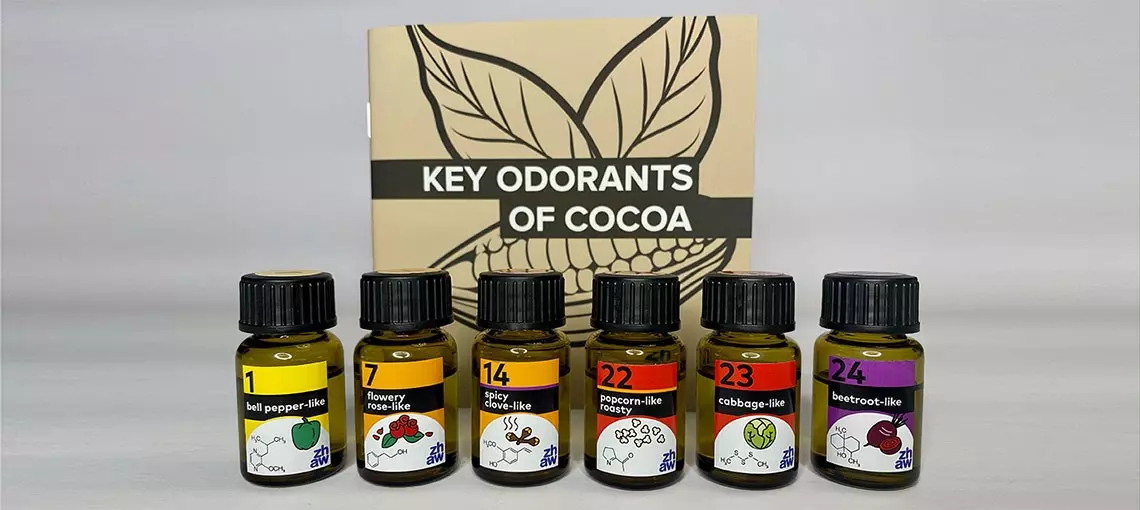ZHAW Aroma Kit Cocoa: an olfactory library for cocoa and chocolate
Scientists have decoded the great variety of aromas in cocoa and identified the aroma substances that contribute significantly to the characteristic chocolate aroma. The result is an aroma kit with 25 reference substances for cocoa and chocolate.

Chocolate is appreciated worldwide for its sensory properties. In particular, chocolates with a high cocoa content reveal a wide variety of aroma and flavour compounds during consumption.
The aroma composition in chocolate is mainly influenced by the origin and variety of the cocoa fruit itself and by subsequent biochemical and thermal processing steps.
So far, more than 500 volatile compounds have been identified in cocoa and chocolate. In the end, however, only a few substances contribute significantly to the characteristic chocolate flavour. These key aroma compounds are able to trigger an olfactory perception that can be associated with a wide variety of odour qualities such as floral, fruity, spicy or even earthy.
The accurate naming of the individual aroma impressions is an important prerequisite for the assessment of the sensory quality of cocoa and chocolate products. Such sensory vocabularies are an important tool to simplify communication between different groups of tasters or between producers, processors and consumers.
At the Institute for Food and Beverage Innovation (ILGI), scientists have identified and classified the key aroma compounds of cocoa and chocolate. This was done using gas chromatography-olfactometry (GC-O) and sensory analyses which were performed by panels of cocoa and chocolate experts. The result was an aroma kit with 25 reference substances. These references were colour-coded to reflect their generation along the entire cocoa value chain. The colour codes indicate the origin of a particular odour substance, with four categories being distinguished:
A) Molecules which are already present in freshly harvested, unfermented cocoa beans.
B) Molecules which are mainly formed by the post-harvest processes (fermentation and drying).
C) Molecules formed mainly by thermal processes (roasting and conching).
D) Molecules which have a negative / undesirable influence on the sensory quality (off-flavour).
The developed aroma kit can thus be optimally used as a training tool for sensory panels as well as for interested consumers. In addition to detailed descriptions of each olfactory reference, the kit provides clear instructions on how best to carry out the training with the aroma references.
The developers of the aroma kit, Irene Chetschik and Karin Chatelain, would like to contribute to a better understanding of the importance of the sensory quality of cocoa and chocolate and share their fascination for the aroma diversity of cocoa with the public.
How you get your aroma kit
The aroma kit can be purchased at a retail price of CHF 330/kit from the ZHAW using the online form below: